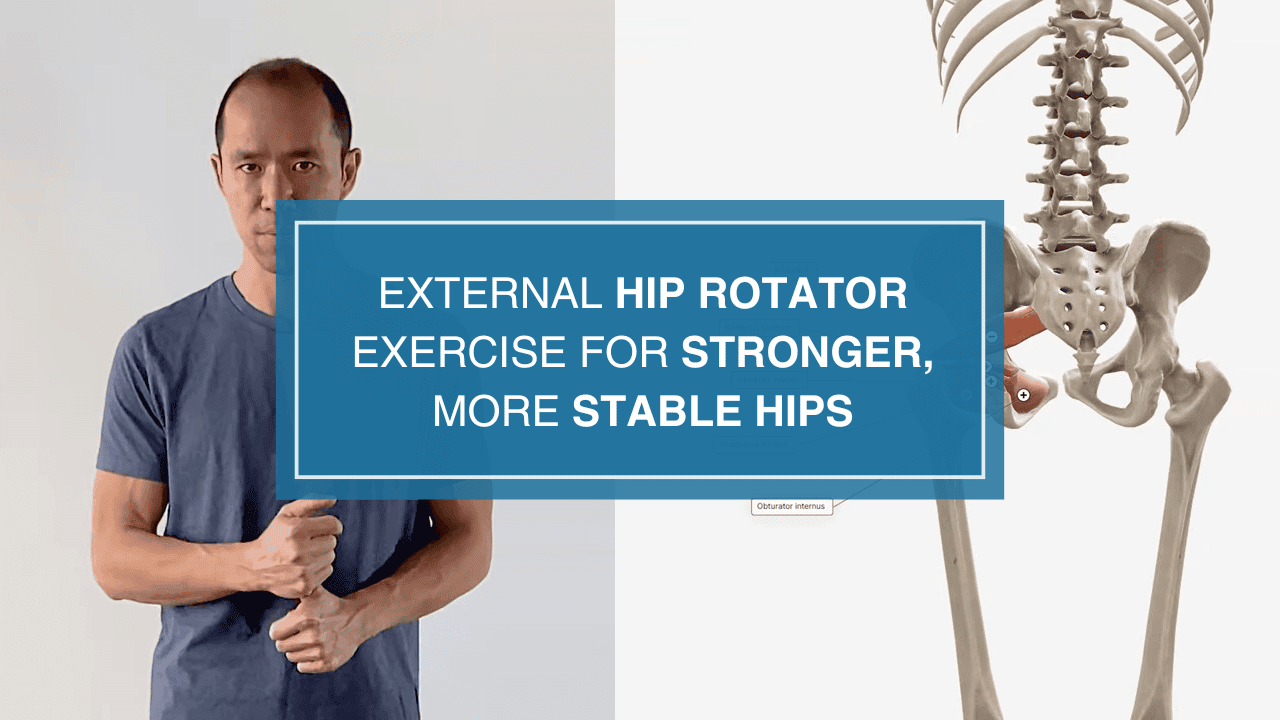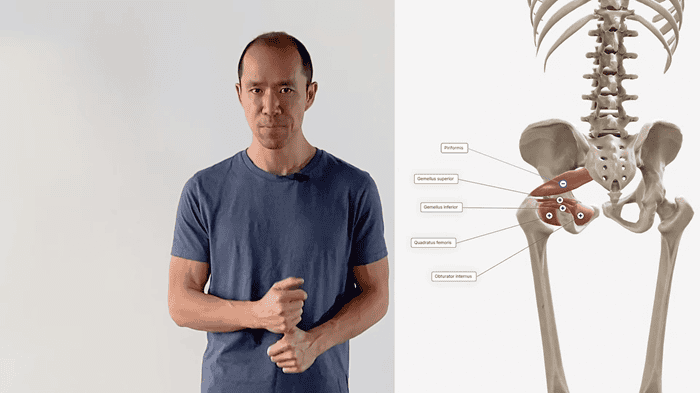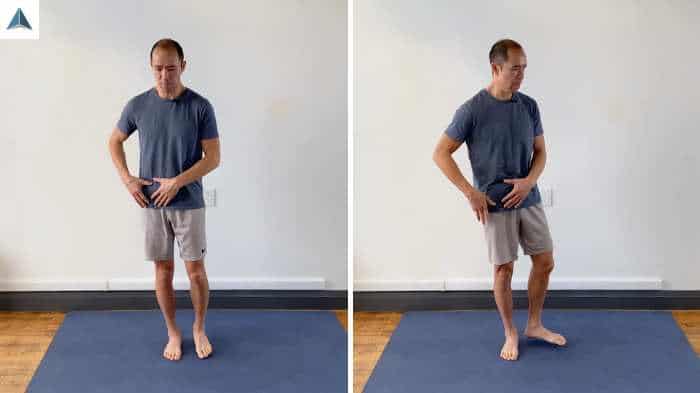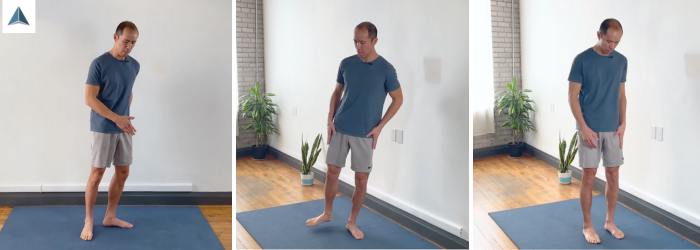
If you’ve ever struggled with hip instability, nagging SI joint discomfort, or even sciatica, there’s a good chance your deep hip stabilizers aren’t doing their job.
The good news is that one well-designed external hip rotator exercise can help wake these muscles up, restore control, and give your hips the support they’ve been missing.
These muscles don’t just rotate your hip outward – they provide essential stability every time you walk, run, or balance on one leg. Unfortunately, they’re often overlooked in traditional training, which is why they tend to be weak and inactive.
This unique exercise strengthens this overlooked group, builds hip stability, and doubles as a painful sacroiliac joint exercise to restore balance where it’s needed most. It’s simple, but when the details are dialed in, the results can be powerful.
But before we get to the exercise, let’s break down why these muscles matter.
Why Focus on the Deep External Hip Rotators?
The deep hip external rotators are a group of six small muscles:
- Piriformis
- Obturator internus
- Obturator externus
- Gemellus superior
- Gemellus inferior
- Quadratus femoris
Most people think of these muscles as just being responsible for turning the hip outward (external rotation). While that’s true, it’s only part of the story. A deeper look at their architecture tells us something more important: they’re designed for stability.
According to Parvaresh et al. (2019) [1], these muscles have relatively small individual physiological cross-sectional areas (PCSA), short fiber lengths, and low pennation angles. Importantly, the gemelli and obturators together have a large collective PCSA and short fiber lengths, which suggests their main role is stabilizing the hip joint rather than driving rotation. In other words, they’re built to keep the femoral head securely centered in the socket, not to create big movements.
Without that stability, the hip joint becomes sloppy and unstable, leading to:
- SI joint irritation
- Femoroacetabular impingement (FAI)
- Hip labrum stress
- Sciatica flare-ups
- General pain and stiffness when standing, walking, or squatting
By reactivating and strengthening these deep rotators, the hips are essentially “locked in” for smooth, efficient movement.
Anatomy in Action: Hip Stability
Think of your hip as a golf ball sitting in a tee. Without stability, that golf ball rattles around, colliding with the edges of the tee. Over time, this creates inflammation, pinching, and painful wear-and-tear.
When the deep external rotators are working properly, it’s like a steady hand holding that golf ball in place as you move. Whether standing on one leg or moving dynamically, they ensure the “ball” stays centered in the “tee.” This addresses both standing-leg stability and dynamic hip joint centration – the ability to keep the femoral head centered during motion. Without this control, sloppy, inefficient motion grinds down tissues and stresses nearby structures like the SI joint or sciatic nerve.
The External Hip Rotator Exercise
This exercise is different from clamshells or banded walks because it combines open-chain and closed-chain external rotation while teaching the body to integrate stability from the ground up. The foot, pelvic floor, and hips all activate together.
Step 1: Set Up With Foot and Floor Activation
- Short and Skinny Foot: Contract the muscles in your arch by pulling the forefoot toward the heel, making your foot shorter and narrower (don’t curl your toes).
- Pelvic Floor Activation: Imagine stopping the flow of urine midstream. This engages the deep stabilizers.
Together, these cues – “foot and floor activation” – prime the body for stability.
Step 2: Perform the Movement
- Stand on the right leg with foot and floor activation engaged.
- Slowly externally rotate the hip, turning the thigh outward while keeping the foot rooted.
- Shift weight fully onto that leg, then lift the opposite foot.
- Pause briefly to feel deep activation through the glutes and pelvis.
- Slowly control the rotation back to standing.
- Relax, then repeat on the left side.
This back-and-forth pattern challenges both hips in open – and closed-chain positions while integrating single-leg balance and dynamic stability.
This exercise should be treated as a control drill rather than a high-intensity move. The goal is to teach the nervous system to maintain hip and pelvic stability.
Exercise Guidelines:
- Perform 3 – 5 slow reps per side.
- Focus on quality and precision rather than speed.
- Maintain foot and pelvic floor activation throughout.
Always check how your hips and SI joint feel before and after. Immediate relief is common due to improved femoral head centration, which reduces tissue irritation that can aggravate the sciatic nerve.
Benefits of This Exercise
Most hip exercises focus only on large movers like the glutes. This drill zooms in on the small stabilizers that often go neglected – and the payoff is significant.
- Improves hip stability: Keeps the femoral head centered for smoother movement.
- Supports SI joint health: Stabilizes the pelvis to reduce irritation. (See more SI joint pain exercises).
- Reduces sciatica symptoms: Controlled femoral head motion reduces irritation to tissues affecting the sciatic nerve.
- Boosts sports performance: Enhances rotational control, balance, and one-leg strength.
- Protects against impingement: Prevents the femur from “bashing” into joint structures.
The movement also provides deep activation through the pelvis, integrating foot, hip, and pelvic floor stabilizers for full lower-body control.
Why Foot and Pelvic Floor Activation Matters
The feet are the foundation of movement, and the pelvic floor ties directly into deep core stabilizers. Activating both simultaneously ensures the stabilizing system lights up from bottom to top, so the hips don’t operate in isolation. This exercise trains an integrated system for functional, pain-free movement, not just isolated hip strength.
How This Exercise Compares to Others
Clamshells, bridges, and banded walks strengthen muscles but don’t retrain the body to stabilize during standing or dynamic movement. This drill:
- Blends open and closed-chain hip rotation.
- Trains stability on one leg.
- Reinforces slow, controlled activation.
For additional drills, check out these hip external rotation exercises.
Next Steps
Try this external hip rotator exercise and observe how your hips respond – lighter, stronger, and more stable. Integrate it gradually into your routine and explore the ROM Coach App, which offers over 300 unique movements to target neglected areas and restore long-term joint health.
Key Takeaways
- The deep external hip rotators are stabilizers first, movers second. [1]
- Weakness contributes to hip instability, SI joint pain, and sciatica.
- Integrates foot, pelvic floor, and hip control for lasting relief.
- Begin with 3 – 5 slow reps per side and progress gradually.
- Deep pelvic activation helps reduce tissue irritation affecting the sciatic nerve.
- Immediate improvements are common – test before and after.
- Explore the ROM Coach App for 300+ unique drills to target neglected areas and restore natural movement.




